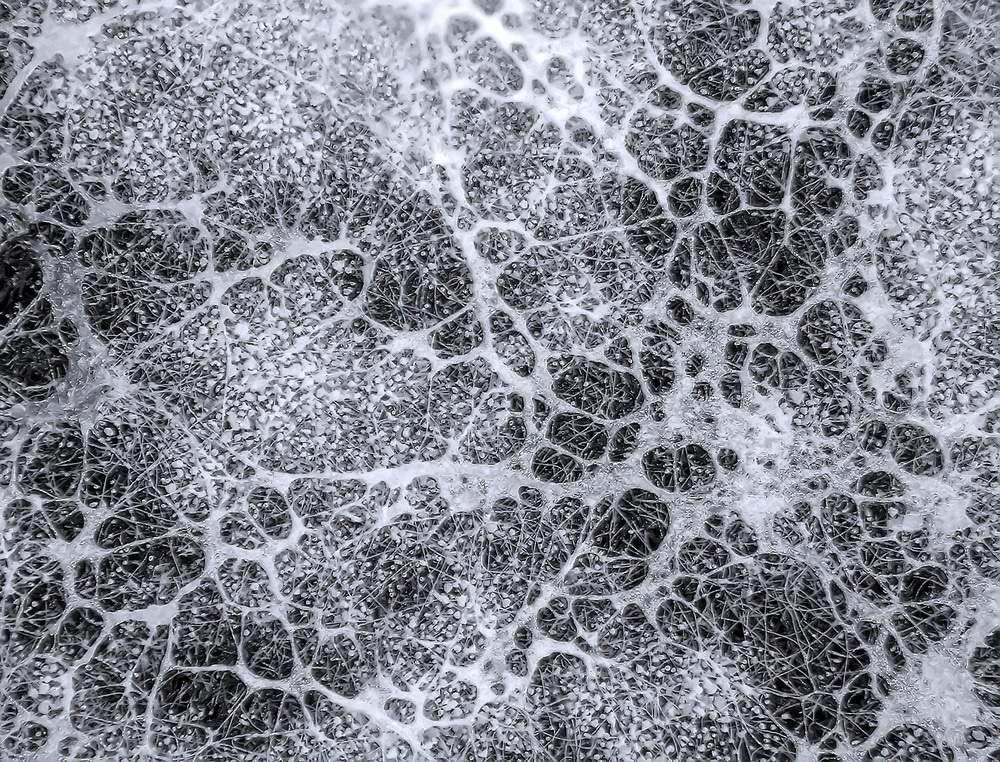Mycocrete is an innovative material that could potentially help solve key issues facing the construction industry in the 21st century. This article will provide an overview of this technology and discuss its benefits and potential.

Image Credit: Protasov AN/Shutterstock.com
Building with Mycelium
Mycelium is the root structure of fungi with a branching structure composed of a mass of hyphae. A number of companies and researchers have explored its use in several key industrial products.
Forward-thinking applications for this natural, biodegradable material include packaging, insecticides, furniture, textiles, and clothing as a replacement for environmentally harmful plastics and in construction.
Mycelium has especially piqued the interest of researchers in the construction industry, leading to the development of a new, innovative, and potentially revolutionary building material: Mycocrete.
What is Mycocrete?
Mycocrete is made from a mycelium paste to produce a material that can be used in construction. The paste is injected into a knitted textile framework or “formwork” to produce a tough and adaptable material that improves upon previously developed fungi-based building materials.
Previous fungal composites suffered from issues with growth and shape constraints, which made it particularly challenging to manufacture diverse applications in construction. This severely limits the potential of fungal composites in the industry to replace conventional building materials.
Mycelial spores are fed on grains and grown on a substrate, and then packed into molds to be grown in optimal conditions and bind firmly to the substrate. Once the optimal density is achieved, the resulting material is dried out before it forms mature fungal bodies.
3D-printed knitted textile networks are used to produce oxygen-permeable molds, which facilitates optimal growth conditions for the mycelium. These molds are highly flexible and provide advantages over conventional stiff molds (oxygen is required during growth, which limits the shape and size of conventional molds.)
Testing and Demonstrating Mycocrete as a Building Material
This innovative fungal-based material has been developed by researchers from the University of Newcastle and Vrije Universiteit Brussels. In order to test Mycocrete, researchers evaluated its properties alongside samples of traditional mycelium composites and samples containing substrates like sawdust.
The textile molds are, as mentioned above, extremely flexible, which provides benefits over conventional approaches. However, the paper’s authors have noted that textiles can yield too much, which made focusing on the framework structure to ensure sufficient rigidity essential.
3D knitted yarn tubes were filled with past and then affixed to a rigid structure so as not to impact performance due to modifications in fabric tension. Notably, when dried, the Mycocrete samples shrank less than other mycelium composites, meaning that they were more stable and reliable.
Once dried, samples were evaluated for their strength using flexion, compression, and tension strength tests, with Mycocrete significantly outperforming other composites. To demonstrate the material’s potential, a proof-of-concept structure termed BioKnit was produced by the study team.
This freestanding structure was formed completely of Mycocrete. Dome-shaped, BioKnit is one complete piece without joins, which could be potential failure points due to their weakness. This join-free structure was possible due to the flexible 3D knitted formwork of Mycocrete.
The Future
Sustainability is a hot-button topic currently in the construction sector as it strives to become more ecologically friendly and help to stall the effects of climate change, effects which are becoming more apparent in the 21st century.
Mycocrete is a new and innovative material that has the potential to be used in eco-friendly, low carbon, and lightweight structures. Whilst it is still early days in terms of the commercial viability of this material, initial test results have proven promising.
The developers of Mycocrete have noted that it is possible to create structures with significantly better properties and performance than in the current literature. Furthermore, composites could be tailored for specific applications.
Mycocrete is just one of the many sustainable and low-carbon building materials currently under development and at different stages in their commercial applications. With more investment, this innovative mycelium paste/3D knitted textile framework could find widespread application in many pioneering architecture projects.
More from AZoBuild: Building With Food Waste
References and Further Reading
Kaiser, R et al. (2023) BioKnit: development of mycelium paste for use with permanent textile formwork Front. Bioeng, Biotechnol. 11 [online] frontiersin.org. Available at:
https://doi.org/10.3389/fbioe.2023.1229693
Harris, M (2023) Why fungi could hold the key to eco-friendly, fire-resistant buildings [online] Physics World. Available at:
https://physicsworld.com/a/why-fungi-could-hold-the-key-to-eco-friendly-fire-resistant-buildings/
E&T (2023) Futuristic concrete made from fungi allows for eco-friendly construction [online] eandt.theit.org. Available at:
https://eandt.theiet.org/content/articles/2023/07/futuristic-concrete-made-from-fungi-allows-for-eco-friendly-construction/
Disclaimer: The views expressed here are those of the author expressed in their private capacity and do not necessarily represent the views of AZoM.com Limited T/A AZoNetwork the owner and operator of this website. This disclaimer forms part of the Terms and conditions of use of this website.